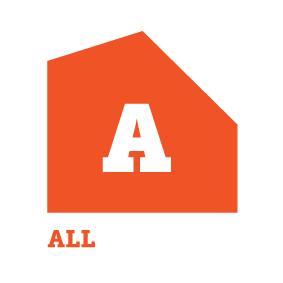Building a consent-free sleepout
Codewords 97: October 2020
From 31 August 2020, a range of new and extended building consent exemptions were added to schedule one of the Building Act, including a range of options for building sleepouts.

Several of the new and extended exemptions require the assistance of a Licenced Building Practitioner (LBP) to supervise or carry out the design and construction work, which will allow consenting authorities to focus more on higher risk building work. It is also a great reflection of the expertise that LBPs provide, and will help boost their profile to the public.
The exemptions cover a wide range of building projects in both rural and urban areas, and include a number of projects including detached standalone buildings, porches and verandas, carports, and solar panels. This means around 9,000 fewer consents will need to be applied for each year and homeowners will save a combined $18m in costs.
A closer look at sleepouts
One of the new exemptions, where homeowners will more than likely need the help of an expert, is in the construction of a detached, standalone building such as a sleepout. A sleepout is a great way for a homeowner to add a private space for an independent member of the family or to have an extra office now that working from home is more popular than ever.
Current building consent exemptions already allow for a sleepout up to 10 square metres to be built without a building consent, but the new exemptions expand this all the way up to 30 square metres if the work is carried out of supervised by an LBP. There is also a separate exemption for 30 metre square sleepouts if they are built from prefabricated or kitset components that have been designed (or had the design reviewed) by a Chartered Professional Engineer (CPEng).
Of course, all of these sleepouts must still meet the building code. It’s important to remember that building consent process is only one part of the legal requirements for building a sleepout. All the usual requirements about durability of materials, district planning, location of services and boundary restrictions still apply. This means a sleepout must be at least its own height away from a boundary, which will preclude many suburban homes from building to the maximum 30 square metres without a consent (unless they want it right in the centre of their lawn!).
Sleepouts have minimal facilities
The sleepouts included in this exemption are not designed to be lived in exclusively. The facilities of an existing dwelling (such as potable water) must also be readily available for the use of those staying in the sleepout. A sleepout under this exemption is not a ‘tiny house’ and if a homeowner wants to include toilet or cooking facilities they need to apply for a building consent.
A win for the LBP scheme
The sleepout also needs to comply with the Building Code, which is one of the key reasons why we require a competent LBP to carry out or supervise the work. These exemptions put trust in LBPs as competent and professional builders, by allowing them to undertake a wider scope of work without a building consent or council inspections. This in turn adds value to holding an LBP licence, and raises the awareness of the scheme with homeowners.
With rights comes responsibility
This work is not Restricted Building Work (RBW) because a building consent is not required. Therefore you do not have to supply a Record of Work (ROW). You are still professionally accountable for the work however, so it is important to maintain the same standards. The oversight of the Building Practitioners Board (BPB) still applies to these projects, as professional accountability is an important tool to protect consumers from rogue builders and maintain the standards of the scheme.
The usual rules around plumbing fittings and wiring still apply too, so plumbing work is not covered by this exemption and any electrical work will need a registered electrician and a certificate of compliance on completion. Fire safety rules also mean the sleepout must have smoke alarms installed. It is important to note that the stormwater runoff from larger sleep outs may be significant, and this will need to be taken into account.
As a building professional you may need to highlight some of these issues to the homeowner, as they may have limited knowledge. The BPB has made it clear that they expect LBPs to use their professional judgement when undertaking work, and to bring up issues of non-compliance with the client rather than following their instructions blindly.
Further information
MBIE are continuing to support both industry and the public on these new changes, with fully-updated Schedule 1 guidance available on building.govt.nz(external link). A new digital tool to help homeowners determine whether they need a building consent will also be live from October 2020.
Quiz
- Do I need to provide a ROW when building a sleepout under the Schedule 1 exemption?
- Yes, if an LBP was required.
- No, a ROW is not legally required as it is not Restricted Building Work.
- For a sleepout to be eligible under the schedule 1 exemption:
- It must not contain bathroom or kitchen facilities
- It can’t have a kitchen, but it can have a toilet
- It can have a kitchenette, but only if a smoke alarm is installed
- Why can some of these exemptions only be carried out by LBPs?
- LBPs have been assessed and found competent to do the work
- LBPs have professional accountability for their work through the Building Practitioner Board
- LBPs have more knowledge and experience than the average homeowner, and can raise concerns if the client is trying to build something non-compliant
- All of the above
Answers
1. Do I need to provide a ROW when building a sleepout under the Schedule 1 exemption?
b) No, a ROW is not legally required as it is not Restricted Building Work.
2. Can more than 1 LBP provide a CoW for a design?
a) It must not contain bathroom or kitchen facilities.
3. Why is it a problem if you sign a CoW without supervising and adequately checking the design work?
d) All of the above.
